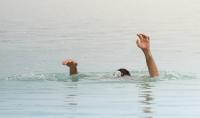Students have invented a device to help drowning people
The project by Michal Karelus and Michal Niedzielczyk from the Faculty of Automotive and Construction Machinery Engineering consists of an inflatable rescue buoy and an ejection system. Its important advantage is that providing assistance does not require direct contact with the victim.
The engineers want to develop their design using the experience of rescue groups, photo pixabay
The system consists of two pneumatic cushions with a pumping mechanism that activates on contact with water. The cushions are enclosed in a capsule, which is launched towards the drowning person and has a range of up to 60 metres.
– A person undertaking rescue operations using our device does not need to have any special qualifications or rescue skills – says Michal Niedzielczyk.
The students have prepared thoroughly for their work. They analysed current solutions, applicable standards and legal acts. They checked what the requirements are for the buoyancy, the components used and the flight parameters of the rescue capsule. They also consulted water rescuers working on various bodies of water.
The engineers developed the necessary models (geometric and mathematical), performed the calculations (from strength to aerodynamic), designed and then manufactured and tested the prototype.
– The prototype rescue capsule is the size of a 1.5-litre water bottle, while the inflatable cushions are metre-long cylinders that provide the buoyancy of modern pneumatic life-vests – explains Michal Karelus.
The prototype was made using 3D printing using the FDM method. This method involves creating objects by melting and layering plastic material onto a base. The process involves heating and extruding the material through a nozzle that moves along a predetermined path, creating layers that gradually build the final three-dimensional model.
– The biggest challenge in the work was to organise it in such a way that in our two-person team everyone had their own individual tasks – says Michał Niedzielczyk. – Of course, there were also problems which we had to discuss together and implement the solutions.
The idea was developed as part of an engineering thesis supervised by Lech Knap, PhD, professor at the University. The project has already received several awards. It won the XXVI competition for the best thesis defended at the Faculty of Automotive and Construction Machinery Engineering of the Warsaw University of Technology (in the engineering thesis category) and won the special prize 'Master of Innovation' in the nationwide Student Construction Competition (KOKOS).
– In the next stages, we would like to equip the rescue teams with our device and rely on their experience to help us develop the project further – says Michał Karelus. – We also have other ideas that we would not like to fully disclose, at least for the time being.










